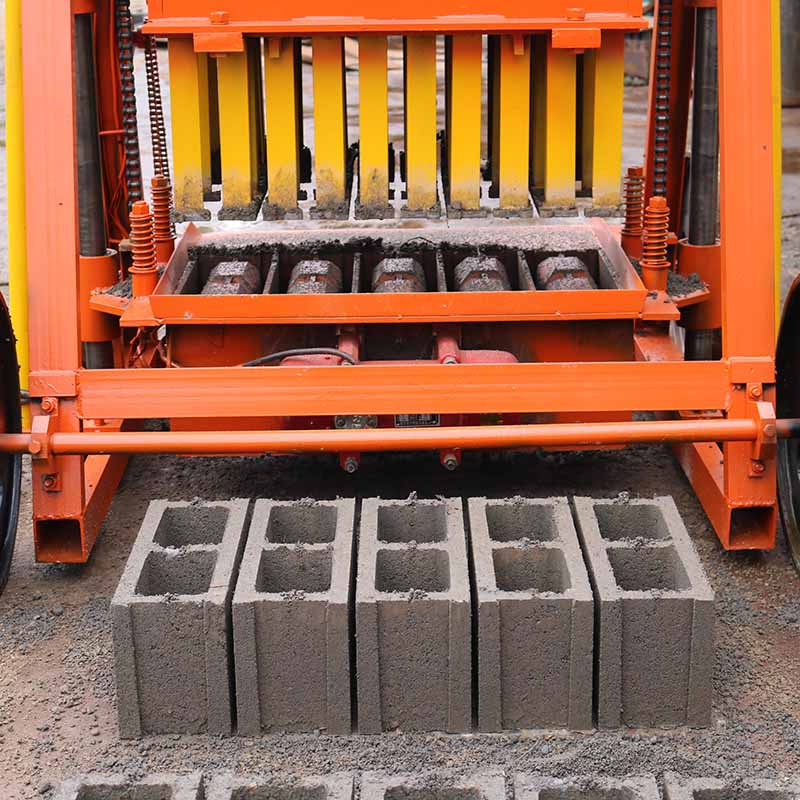
Image source:Aiwei block machine
Introduction
Bricks, the quintessential building blocks, have stood the test of time as essential components of architecture. In the evolution of construction, the role of brick making machines has been transformative. These machines are more than mere tools; they are the architects of modern construction, molding and shaping the very foundation of our built environment. In this article, we embark on a journey to understand the multifaceted functions of brick making machines, exploring how they shape, mold, and revolutionize the process of creating the building blocks that define our structures.
1. The Essence of Brick Making Machines
At their core, brick making machines are innovative mechanisms that streamline the brick production process. From mixing raw materials to molding and firing, these machines epitomize efficiency, precision, and consistency in brick manufacturing.
2. Raw Material Preparation: A Prerequisite for Quality
The journey of a brick begins with the careful selection and preparation of raw materials, a process that has been significantly enhanced by brick making machines.
- Mixing and Blending: Modern machines mechanize the mixing of clay, sand, and other additives, ensuring a homogeneous mixture that guarantees consistent brick quality.
- Water Content Control: Precise control of water content ensures the optimal plasticity required for molding.
3. Molding: Shaping Creativity and Precision
Molding is where the transformation of raw materials into distinct brick forms takes place, showcasing the ingenuity of brick making machines.
- Extrusion Process: Some machines use extrusion to form bricks, allowing for consistent shapes and sizes.
- Pressure and Compaction: Hydraulic or mechanical pressure is applied during molding to ensure uniform density and strength.
4. Design and Pattern Innovation
Brick making machines are not limited to producing standard bricks; they allow for intricate designs and patterns that embellish architectural aesthetics.
- Customizable Designs: Machines with intricate molding capabilities enable the creation of bricks with unique textures, patterns, and even logos.
- Architectural Expression: These design features contribute to the identity of structures, seamlessly integrating aesthetics with functionality.
5. Uniformity and Precision
One of the defining functions of brick making machines is their ability to consistently produce bricks with uniform dimensions and qualities.
- Consistency: Machines eliminate the variability associated with manual production, resulting in a standardized product.
- Quality Control: Uniformity ensures that bricks meet structural and safety standards, enhancing the overall reliability of construction.
6. Efficiency and Scale
The advent of brick making machines has revolutionized the efficiency and scale at which bricks are produced, transforming the construction industry.
- High Output Rates: Automated machines can produce a large number of bricks in a relatively short time, meeting the demands of large-scale projects.
- Reduced Labor Dependency: Machines significantly reduce the need for manual labor, allowing workers to focus on more specialized tasks.
7. Versatility in Brick Types
Brick making machines are versatile in their capacity to produce various types of bricks, catering to different construction needs.
- Solid Bricks: Standard solid bricks are used for load-bearing walls and structural elements.
- Perforated Bricks: These bricks offer better insulation and are used for non-load-bearing walls.
- Hollow Bricks: Hollow bricks are lighter and offer insulation benefits, making them suitable for energy-efficient construction.
8. Streamlined Firing Process
The firing of bricks is a crucial step that determines their strength and durability. Brick making machines have modernized and optimized this process.
- Kiln Compatibility: Machines produce bricks that are designed to be compatible with modern firing kilns, enhancing firing efficiency and uniformity.
- Quality Enhancement: Modern firing techniques contribute to the strength and longevity of the final product.
9. Environmental Considerations and Sustainability
Brick making machines also contribute to sustainable construction practices, addressing environmental concerns.
- Recycled Materials: Some machines allow the incorporation of recycled materials, reducing demand for virgin resources.
- Energy Efficiency: Advanced machines optimize energy consumption during production and firing, lowering carbon emissions.
Conclusion: Crafting the Future of Construction
Brick making machines are not merely devices; they are orchestrators of architectural progress. They bring efficiency, precision, and creativity to the very foundation of our structures. From raw material preparation to firing, these machines are the architects of our modern skylines, molding bricks that stand as a testament to human ingenuity and craftsmanship. As technology continues to advance and sustainable practices become the norm, brick making machines will continue to shape the way we build, evolve, and redefine the possibilities of modern construction.
